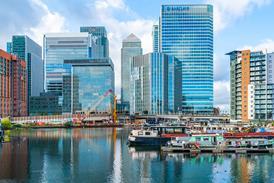We are now approaching six months since Covid work-from-home (WFH) guidance was scrapped and a hybrid working model of some degree is now ingrained in most companies.

At McBains, we are working with several clients on how to maximise the potential of their offices where staff attendance patterns vary. So, what have we learned?
1. Create a sense of community
The argument was that WFH would mean productivity would fall – and while personal productivity has increased, team productivity has seriously suffered. The best office environments will be high-quality, amenity-rich spaces that facilitate such teamwork.
When people experience space as stimulating or inspiring, they tend to have a greater sense of community, which contributes to greater engagement, productivity, innovation and retention. If staff were not excited by their office before Covid hit, the likelihood is they are even less enamoured of them now. Create places that are interesting and foster creativity and space where people want to be. Allow workers to have choice and variety so they can do their work in the place that serves them best, and keep space fresh and updated.
Naming buildings, floors, areas or rooms can also subtly help influence behaviour. Terms like ‘learning centre’ or ‘innovation hub’ can influence how people operate in the workplace.
2. Support performance as well as productivity
The physical and virtual workplace is now expected to support not only productivity but also high performance. Performance means more than just tangible measures, such as the ability of an employee to complete their work to a certain standard; it also includes factors such as communication, willingness to collaborate and general attitude at work.
These tangible and intangible factors of employee performance matter because both can have a significant impact on the overall performance and culture of the business – and ensuring everyone buys into the organisation’s culture is more important than ever, as the hybrid model creates new challenges on that front, with the risk of a disjointed, disconnected workforce.
3. Promote wellbeing with fully accessible environments
Remote working has made ‘office’ work more accessible and appealing to the less physically able. My view is that the current surge towards providing activity-based working environments has missed a vital part of accessibility for wheelchair users in agile working environments. Indeed, TUC has found that nine out of 10 workers with disabilities wanted to continue WFH. At the moment, many offices seem to be becoming less accessible not more.
Throughout the pandemic, mental health issues have also been more apparent. A study by Gallup found that wellbeing and engagement are reciprocal – influencing each other – and the deterioration of wellbeing is correlated with more WFH and social isolation. It follows, then, than offices that foster wellbeing will also be good for mental health and engagement. Provide space that supports wellbeing, and settings where people can rejuvenate, reset and reinvigorate during the day.
Louise Dixon Chapman is director of workplace at McBains





























No comments yet